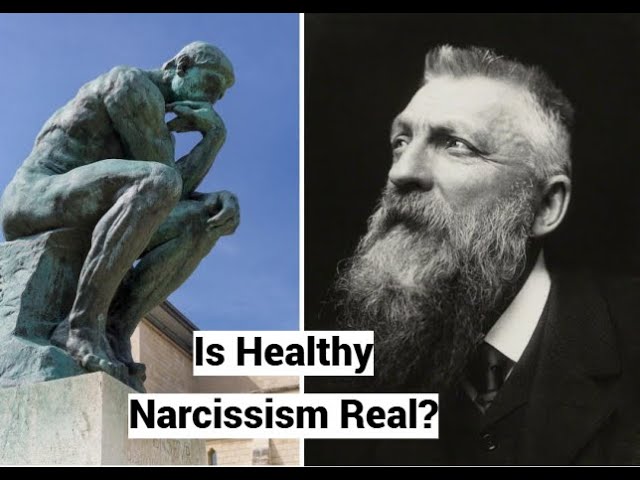Narcissists
Narcissists
Narcissists
Narcissists
Narcissists
Summary: Malignant Self-Love Narcissism and Abuser Behavior
1. Introduction to Narcissistic Injury Post-Relationship Dissolution
- The end of meaningful relationships causes narcissistic injury, leading abusers to use lies, distortions, half-truths, and outlandish interpretations to soothe their pain.
[00:00]
2. Defense Mechanisms in Abusers
- All abusers use primitive defense mechanisms such as splitting, projecting, denial, intellectualization, and narcissism.
- Some abusers decompensate and resort to self-delusion when facing failure.
[01:10]
3. Masochistic-Avoidant Solution
- Abusers turn rage inward, punishing themselves to gain attention from others.
- Self-handicapping and self-inflicted failure allow control over their lives by choosing to fail.
- Such abusers passively sabotage their success while publicly expressing misery and self-pity to bolster self-esteem.
- Paradoxically, greater suffering leads to a sense of liberation and relief from commitment.
[02:40]
4. Delusional Narrative Solution
- Some abusers create grandiose self-images, seeing themselves as heroes, brilliant, irresistible, and entitled.
- The bigger the gap between fantasy and reality, the stronger the delusion, which can eventually replace reality.
- This can lead to withdrawal and schizoid or catatonic states.
[05:00]
5. Antisocial Solution
- Certain abusers become antisocial, sociopathic, or psychopathic, displaying lack of empathy, disregard for laws, and contempt for society.
- They engage in criminal acts to punish those they blame for their state.
[06:40]
6. Paranoid-Schizoid Solution
- Some develop persecutory delusions involving paranoia about being gossiped about, deceived, humiliated, or victimized.
- They withdraw from social contact and avoid relationships, often adopting a schizoid lifestyle by choice.
[07:30]
7. Paranoid Aggressive or Explosive Solution
- Others who develop persecutory delusions respond with aggression, becoming verbally, psychologically, or physically abusive.
- They interpret innocent comments as hostile and attack loved ones with indignation and blame.
- This stance causes real damage, mainly to themselves.
[09:20]
Concept and Nature of Sharing
- Altruism is fundamentally about sharing, which is not always an act of caring but can be utilitarian, self-interested, or egotistical. Sharing multiplies resources and empowers individuals through cooperation and collaboration [00:00].
- Sharing is presented as the natural and foundational principle of the universe, evident in physics (entanglement), chemistry (chemical bonds), and biology (gene cooperation). All living organisms, from bacteria to humans, inherently participate in sharing [01:10].
- Selfishness and egotism are abnormal and exceptions, socially constructed illusions contrary to natural behavior. Altruism and sharing are mistakenly viewed as commendable but unusual, which is a misperception [02:10].
Psychological and Behavioral Aspects of Sharing
- Sharing begins early in human development and is a dominant psychological feature; selfishness and exclusion correlate with pathology and mental illness [03:20].
- Sharing is a form of transaction requiring partners for cooperation and reciprocity. It is a primitive but essential foundation for complex social behaviors and collaboration [05:00].
- Selfishness stems from an inability to perceive others as independent agents and is linked to psychological pathologies such as narcissism and psychopathy, where others are internalized or objectified, making genuine sharing impossible [06:10].
Narcissism and Psychopathy as Barriers to Sharing
- Narcissists internalize others, seeing them as figments or parts of their own mind, hence perceiving no real external people to share with. Psychopaths see others merely as tools, denying equivalence or separate agency [08:00].
- These pathologies result in permanent solipsism or instrumental objectification, which precludes sharing and healthy social interaction [09:30].
Evaluating Change in Narcissistic Personality Disorder (NPD)
- Mitigation or remission of narcissism can only be reliably assessed through long-term observation of the individual’s sharing behavior in social contexts, as sharing indicates recognition of others’ separateness [10:40].
- Diagnostic criteria for NPD are relational and behavioral; thus, increased or regained sharing behavior over many years signals a reduction or disappearance of narcissistic pathology [12:20].
- Short-term assessments of change are unreliable due to potential manipulation or temporary behavioral shifts; longitudinal studies extending over decades are necessary for validation [13:50].
- Aging may reduce some antisocial behaviors naturally, but absence of negative behavior alone does not prove remission. Emergence of positive sharing behaviors is the definitive indicator [15:40].
Conclusions on Sharing and Narcissism
- Sharing is the behavioral opposite of narcissism; presence of sharing denotes non-narcissism regardless of motivations (which can include self-interest) [17:20].
- Sharing is the smartest strategy, linked to intelligence and social adaptability, while withholding or hoarding is either stupidity or a sign of mental illness [18:00].
Timestamp Legend
- Times are approximate references to the start of the respective topic discussion in the transcript [mm:ss].







